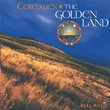| All Artists: Eduard Tubin, Neeme Järvi, Swedish Radio Orchestra, Swedish Radio Symphony Orchestra Title: Eduard Tubin: Symphonies Nos. 3 & 8 Members Wishing: 0 Total Copies: 0 Label: Bis Release Date: 9/23/1994 Album Type: Import Genre: Classical Styles: Historical Periods, Modern, 20th, & 21st Century, Symphonies Number of Discs: 1 SwapaCD Credits: 1 UPCs: 750582016424, 7318590003428 |
Search - Eduard Tubin, Neeme Järvi, Swedish Radio Orchestra :: Eduard Tubin: Symphonies Nos. 3 & 8
 | Eduard Tubin, Neeme Järvi, Swedish Radio Orchestra Eduard Tubin: Symphonies Nos. 3 & 8 Genre: Classical
|
Larger Image |
CD DetailsSimilarly Requested CDs
|
CD ReviewsElectrifying Performance of Tubin's Symphonies Shuji Ogino | Boston, MA USA | 06/20/2002 (5 out of 5 stars) "Eduard Tubin is not a popular composer. However, his symphonies have mixture of Romantic timbre, Estonian music and rhythm, and more modern dissonant sound. His 3rd symphony is a Romantic piece with vivid, distinct rhythm and astounding codas for the 1st and the last movements. His 8th symphony is a more solemn work with mixture of dissonance and conssonance. Estonian rhythm is still very vivid. An Estonian conductor, Neeme Jarvi, and the Swedish Radio Symphony Orchestra recorded their electrifying performance. Tubin's symphonies should receive more attention and performances in concert halls. I look forward to listening to concert performance of his symphonies." Exhilarating performances of Tubin's inspirational works. David A. Hollingsworth | Washington, DC USA | 07/18/1999 (5 out of 5 stars) "Eduard Tubin (1905-1982) was Estonia's most important composer in the modern era. The global recognition of his contributions to Estonian music was overdue. However, as always, we have Neeme Jarvi to thanks for bringing little-known works of neglected composers, like Tubin's symphonies & orchestral works, to the forefront of recognition & ultimately appreciation. Tubin was not a totally neglected composer outside Estonia. The Boston Symphony Orchestra for instance commissioned the composer a work as part of the ensemble's centenery celebrations: the work which became his 10th symphony of 1973. The first three symphonies of Tubin has the idioms not far from the idioms of the late Romantic, post-Scriabinian era. Tubin was not an avant-garde, but within his time and there's not doubt that as his career progressed withing time, so has his musical thoughts, ideas, and expressions. In that respect, he was an Estonian equivalent to England's Sir William Walton (1902-1983) his near contemporary. The epic & inspirational Third Symphony of 1942 was composed as part of the anniversary celebrations of Estonia's independence as a republic. The symphony shares some of its language with the works of Ralph Vaughan Williams, Walton, & to lesser extent, Sir Arnold Bax. The first movement begins with a serious note, like a march, but subdued & restrained. Energy & passion soon take over, with every sense of heroism & triumph embetted. Towards the end, the movement became poetic with optimism before it's resounding close. The second movement begins with a fantistic-like idea of the strings. That idea repeats itself, though with greater intensity & with greater force. Soon, that intensity dies with the violin solo, with a peaceful yet mystical playing. The intensity resumes abruptly but briefly until the movement ends lightly. The finale resumes the heroics of the first movement after a somewhat fanfare beginning of the trombones and then the horns. The themes of the first movement are repeated, but with the same level of inspiration and passion. The closing bars is of triumph. Tubin's Eighth Symphony of 1966 has a more modern language with a lesser degree of accessiblity. Whereas the first movement is melancholic the second movement is jovial & dancelike yet powerful. The third movement is active yet serious whereas the finale is majestic.The performances of Neemi Jarvi and the Swedish Radio Symphony Orchestra were done with every ounce of enthusiam, passion, command, and authority. Although this recording is the only one available, it is a model one not surpassable by whatever recordings of these works may enter into our mists. Personally, I would recommend buying this disc with the discs featuring Tubin's Symphonies nos. 1 & 2 before embarking into collecting discs of Tubin's later works. His wealth of fresh thematic ideas was remarkably.Passionately recommended." A good place to start if you're new to Tubin's music M D. Henegar | Shropshire, UK | 01/13/1999 (4 out of 5 stars) "Eduard Tubin (1905-1982) is a name hardly on the tip of everyone's tongue, even in his native Estonia (or in Sweden where he lived from 1944 until his death). If you like big-boned music in a late-romantic style then Tubin is worth a try. As a test-piece listen to the 3rd movement of the 8th Symphony (track 6); here is a piece of pure violence beginning with subdued dissonant clashes in the lower strings building up to a tour-de-force of anger complete with fortissimo tam-tam crashes before it dies back. These are to very fine and underrated symphonies by an unsung master. The playing of the Swedish Radio Symphony Orchestra under Neeme Järvi (who knew the composer) is excellent."
|

 Track Listings (7) - Disc #1
Track Listings (7) - Disc #1






